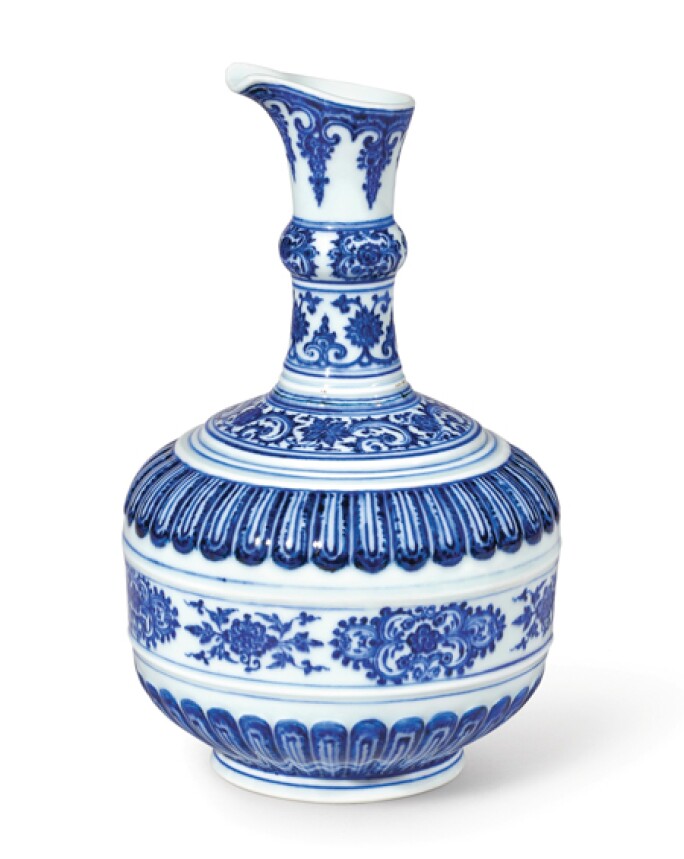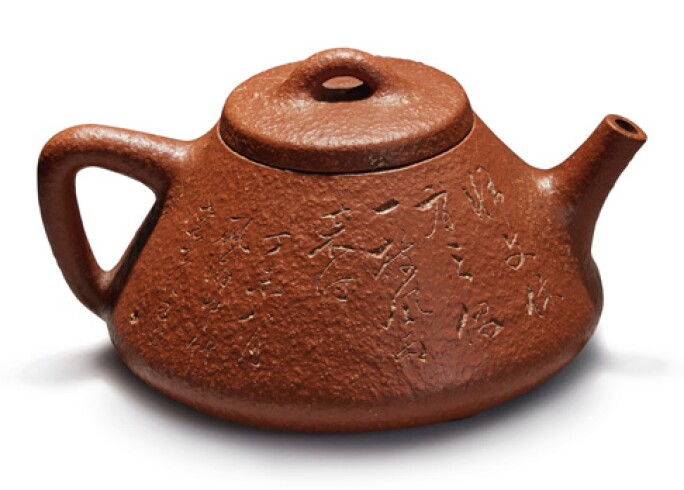S panning centuries of Chinese art history, ceramics are undoubtedly one of the nation’s most significant art forms. From Gongyi Kiln to Jingdezhen, follow Sotheby's Chinese Works of Art specialist on a visit to some of the foremost porcelain manufacturing sites in China and discover the artistic brilliance behind these legendary creative centres.

Map of China
SANCAI WARE
Gongyi Kiln (Gongyi City, Henan Province)

A RARE SANCAI-GLAZED POTTERY EWER, TANG DYNASTY. ESTIMATE $120,000 – 180,000.
Sancai wares of the Tang dynasty (618-907) are best known for their ostentatious decorations and opulence in variety, which often left people wondering where these extravagant pieces were created. It was not until the 1950s – upon the discovery of the Gongyi kiln – that the mystery around sancai wares’ place of manufacture began to be solved. Thereafter, several other sancai kiln sites were identified in China, including the Huangbu kiln, Xing kiln, Liquanfang kiln, and Qionglai kiln.
The Gongyi kiln by far appears to be the most important among all the sancai kiln sites discovered. The Gongyi kiln is believed to have started in the Sui dynasty (581-618), with production gradually declining in late Tang (618-907). Besides sancai wares, it is also known to have produced white wares and monochrome- glazed pottery during the Tang dynasty. The large quantity and wide variety of specimens excavated from this kiln site are indispensable resources for understanding the historical, culture, and technical aspects of sancai wares.
LINGWU WARE
Lingwu Kiln (Ciyaopu Town, Lingwu County, Ningxia)

AN EXTREMELY LARGE AND IMPORTANT 'LINGWU' CUT-GLAZE WINE JAR, XIXIA DYNASTY. ESTIMATE $120,000 – 150,000.
The Lingwu kiln was one of the major sites of ceramic production in the Xixia dynasty (1038-1227). From 1983 to 1986, the kiln site was excavated, yielding a variety of shards and kiln implements. The findings show that this site produced several types of glazed wares, including ceramics with white, black, brown, and celadon glazes. The shards also reveal the stylistic influence of Cizhou kilns on potters at Lingwu, for instance the use of white slip on buff-coloured body and the employment of sgraffiato, carved, and incised decorative techniques. Archeologists discovered firing pits that were used to dry the clay bodies of the wares inside the workshops at the Lingwu kiln site. Conventionally, unglazed clay vessels were left outdoors to be air-dried after potting. However, as the Lingwu kiln is located in the desert, the invention of this indoor drying facility prevented the biscuit from over-drying due to exposure to the elements.
JIZHOU WARE
Jizhou Kiln (Yonghe Town, Ji’an City, Jiangxi Province)

A PAIR OF 'JIZHOU' 'TORTOISESHELL'-GLAZED BOWLS, SOUTHERN SONG DYNASTY. ESTIMATE $30,000 – 50,000.
First established in the Five Dynasties (907-960), the Jizhou kiln reached the pinnacle of its production in the Song dynasty (960-1279). Archaeological excavations since the 1950s have yielded a significant amount of evidence indicating that the Jizhou kiln was once an important ceramic production centre in southern China with a varied range of wares produced to a similar high standard. Innovation significantly contributed to its success. Jizhou artisans employed a variety of inventive decorative techniques, for example repurposing everyday objects, like papercuts and tree leaves, as tools to create patterns in their glazes. They also skillfully combined different glazes to create surfaces imitating tortoiseshell or tiger skin. The Jizhou kiln’s popularity also stemmed from its ability to replicate ceramic types from contemporary kilns. This can be seen in Jian-type black wares, Ding-type molded white wares, qingbai wares, Yaozhou-type carved celadon wares, Longquan-type celadon wares, and Cizhou-type painted wares, all excavated at Jizhou.
JINGDEZHEN
(Jingdezhen City, Jiangxi Province)

A RARE AND MAGNIFICENT BLUE AND WHITE EWER, YONGZHENG SEAL MARK AND PERIOD. ESTIMATE $500,000 – 700,000.
Located in the Jiangxi province, Jingdezhen has been the foremost porcelain manufacturing centre in China for the past millennium. Its history of ceramic production can be traced back to as early as the Tang dynasty (618-907) with the discovery of dated kiln implements at Baihuwan, Jingdezhen. During the Song dynasty (960-1279), Jingdezhen was famous for its qingbai wares. It produced these finely potted wares characterized by their attractive translucent light blue glaze into the Yuan dynasty (1271-1368). Also during the Yuan, Jingdezhen potters developed blue and white porcelain, which surpassed qingbai in popularity by the end of the period.

A SET OF FOUR FAMILLE-ROSE 'FIGURAL' PLAQUES, SIGNED ZIXU, REPUBLIC PERIOD. ESTIMATE $25,000 – 35,000.
The creation of blue and white porcelain was significant in the establishment of Jingdezhen as China’s ceramic epicentre. In the Ming (1368-1644) and Qing (1644-1911), blue and white porcelain continued to flourish at Jingdezhen alongside innovative decorative techniques. Beginning in the late Qing period, a new trend toward individualism in porcelain-making emerged in Jingdezhen. Individual artists would draw references from Chinese classical painting to decorate porcelain plaques and vessels, using them as a mean of self-expression. A significant number of porcelain painters gathered at Jingdezhen to paint and exchange ideas; the most famous among them were the ‘Eight Friends of Zhushan.’
YIXING WARE
Yixing (Yixing City, Jiangsu Province)

AN INSCRIBED YIXING STONEWARE 'BAMBOO' STONE-DIPPER TEAPOT AND COVER, SIGNED ZIYE, QING DYNASTY, DAOGUANG PERIOD, DATED DINGWEI YEAR, CORRESPONDING TO 1847. ESTIMATE $50,000 – 70,000.
Located in the Jiangsu province, Yixing is almost exclusively known for its zisha (purple sand) wares. The term zisha is a generic name for a wide range of clays from the Yixing area, including zini (purple clay), zhuni (red clay), lüni (green clay), baini (white clay), and huangni (yellow clay). During the Ming (1368-1644) and Qing dynasty (1644-1911), Yixing was famous for producing zisha teapots and other scholarly objects. Several generations of zisha masters emerged in this region, such as Gong Chun (act. ca. 1506-1566), Shi Dabin (1573-1648), Chen Mingyuan (act. ca. 1662-1722), Chen Hongshou (1768-1822), Yang Pengnian (1796-1850), and Qu Yingshao (1778-1849). The unique quality of Yixing zisha wares was admired by the imperial court. Multiple imperial records from the Yongzheng (1723-1735) and Qianlong period (1736-1795) have shown that Yixing teapots were delivered to the Qing court as tributes.


